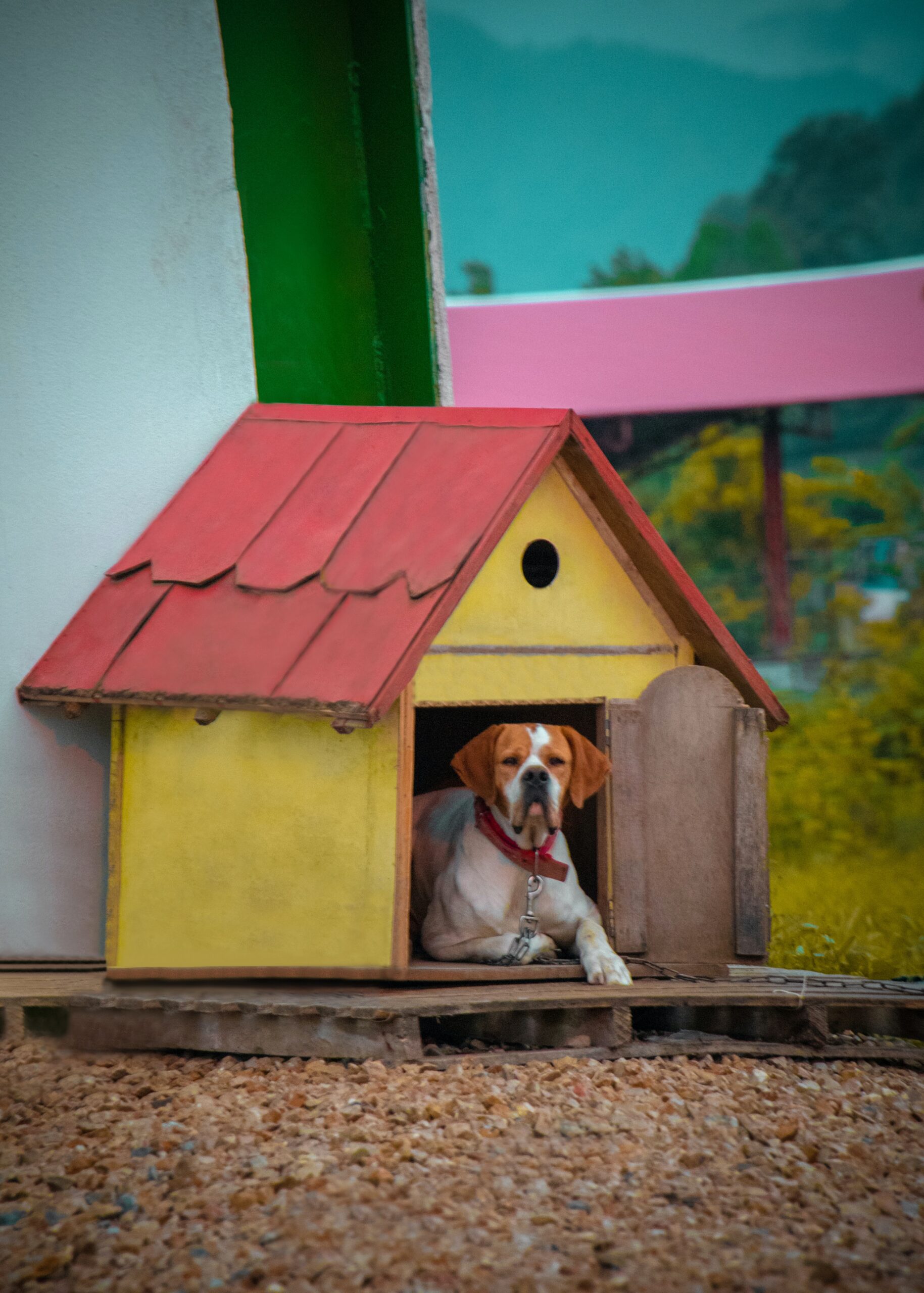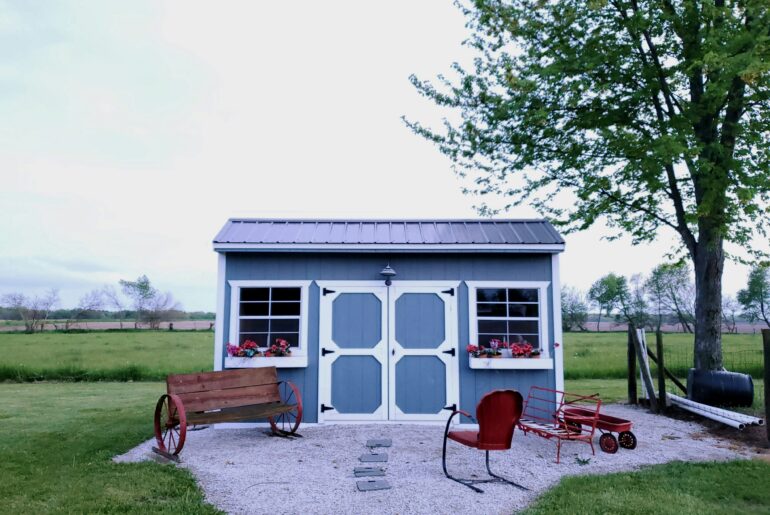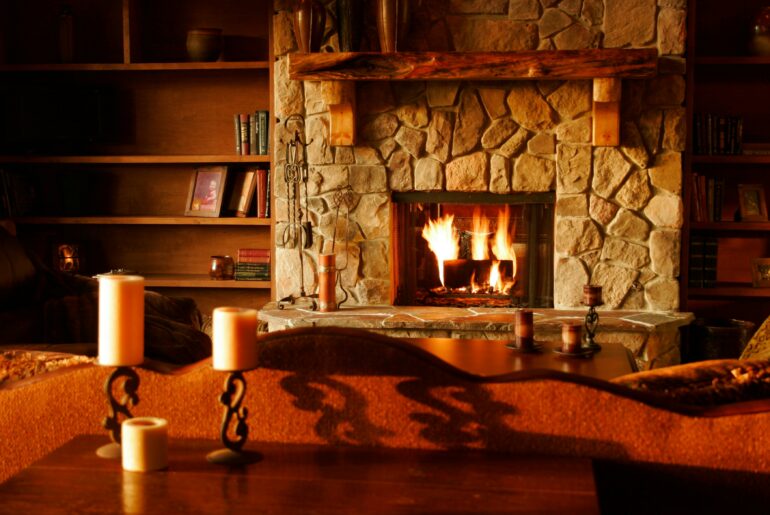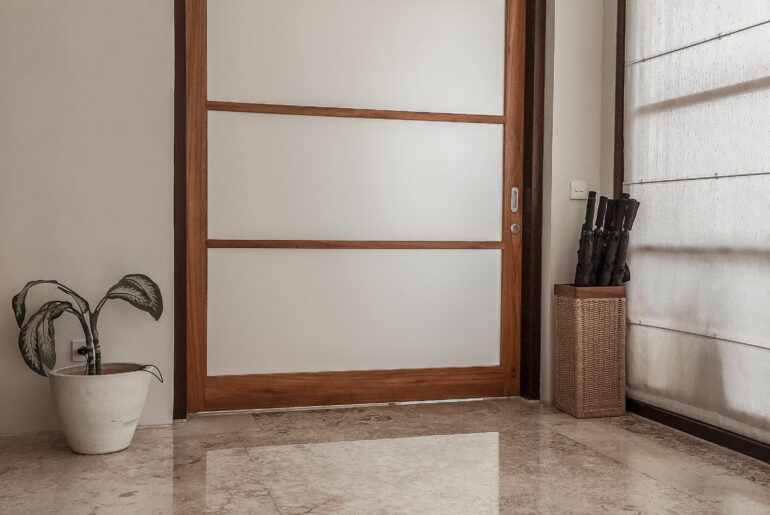Your dog may not spend all its time outdoors, but you may have a doghouse, or kennel that it can use in the yard while you are out at your place of work. We all want our four-legged friends to be comfortable, especially when Winter is coming.
So how do we do our best for Fido? Insulating their doghouse can be done in several straightforward, easy ways, which means we can leave them happy in their homes while we go about our business.
Whether building from scratch or renovating, here’s our guide to keeping your dog cozy.
Fido Already Has a Doghouse: What To Do
Of course, he does, and it’s a fine construction. The good news is that if access is an issue, i.e. it doesn’t come apart easily, then there is a range of external insulated cladding that you can use.
Insulated vinyl siding, with an average R-value of 2.8 will spruce up the exterior of a tired kennel as well as contribute to the comfort of your hound. 2.8 isn’t the best score, so we’d recommend wrapping the doghouse in an inch of foam board first.
Pinning a continuous insulating foam board to the sides and roof of the doghouse will trap warm air inside in Winter and help reflect the heat of the sun in Summer. Use a foil-faced board such as this 1-inch Johns Manville foam board.
It is easy to cut and light to handle. Seal the joints with a mastic sealant to keep moisture out.
Where Do I Start With Insulating A Doghouse?
The Doghouse Floor
- The floor of the doghouse should be the first place to attend to! If your doghouse doesn’t have stubby legs to keep it off the ground, then now is the time to add them.
- Ventilation below a doghouse is essential in keeping the wet out of the structure. Moisture on the floor of a kennel is guaranteed to keep your pup cold.
- Tip up the doghouse so you can access the underside.
- Clean and dry off the surface.
- Cut the foam board to fit right up to the edges of the doghouse.
- Glue the foam board to the underside of the doghouse.
- Frame the foam board with 1” x ½” treated timber to secure it and cover it with PT plywood to protect it from vermin.
- Put the doghouse back on its feet, making sure there is clearance between the ground and the underside of the kennel.
The Doghouse Walls
- Cut the foam board to fit the sides of the doghouse.
- Glue and frame out with 1” x ½” treated timber to secure.
- Fit the foam board tight up against the roof overhang.
- Next, fit the siding, or other paneling, to cover the insulation.
Top Tip: If you have recently replaced the siding on the main house, this is an ideal way to use up those offcuts and end up with a smart doghouse accessory for your home! Fido may not notice, but you will!
The Doghouse Roof
- Adding all of this material might well have widened the doghouse beyond the width of the existing roof, but that shouldn’t be an issue.
- Adding a strip of 1” x ½” treated timber to the fascia to take the edge of the insulation foam board should solve this.
- If the roof is still overshooting the walls and is easy to pry off, or it is a hinged roof, then insulating inside the doghouse roof is a good option.
- If not, then cover the foam board on the roof with bitumen shingles or siding panels.
Building a New Insulated Doghouse
If your doghouse is on its last legs, and you’re motivated to do your best for your fine four-legged friend, then putting together a new, insulated shelter is not a difficult job for a seasoned tradesperson or even a beginner at DIY.
Most plans for kennels show a frame made with 2” x 2” lumber paneled on the outside with ply.
In this case, it is a straightforward task to fill the frames with either 1” or 2” foam board as you go.
Be sure to cover the insulation on the inside with solid paneling to protect it. Whether or not Fido is a chewer, it’s likely your dog’s claws could damage the foam board if it is left exposed.
How Can I Heat My Doghouse
You might think that suitably insulating your doghouse is as far as you need to go. Certainly, when it comes down to it the international building code has nothing to say about R-values or other comfort measures.
However, it is worth considering whether or not a heating pad should be installed in the kennel.
These heated pads come in several different sizes and can be installed in external doghouses with just a domestic plug.
The self-heating reflective pet pad range starts at less than $10 and does not need a power supply, simply reflecting Fido’s body heat directly back. The longer Fido lies there the warmer it gets.
Warming pads further up the scale come with chew-proof cables as well as temperature controllers with a rapid-heat function.
How Can I Cool My Doghouse
On those dog-day afternoons when the heatwave hits how can you keep Fido cool?
Air-conditioning is a good answer, and it is not unusual for professional dog breeders to use small mini-split ductless Aircon units in their kennel set-up.
For the rest of us wanting to keep our dogs in comfort during the long hot summer days, there are plenty of compromise systems that you can find.
There are many camping, or portable 12-volt aircon systems that work perfectly well, especially in smaller areas such as the low-volume space within a doghouse.
In a backyard where there is limited shade, this small rechargeable air conditioning unit could be the best solution.
Top Tip: It is also a good idea to consider ventilating your doghouse. A vent that you can open or close opposite the entrance will help move air through the kennel, keeping it cooler in the summer.
Doghouse Insulation Quick Fixes
Sometimes, improving Fido’s comfort in the doghouse can be as simple as turning the kennel so that the prevailing wind doesn’t hit the front entrance square on. This will help keep the inside dry when it rains too.
If you have a wide, covered veranda, then locating the doghouse within it will not just help keep the rain off, but also deliver shade.
Propping the doghouse up on each corner to make sure the floor is not in contact with the ground, can also help to keep the doghouse dry. A dry doghouse is easier to keep warm in winter and cool in the summertime.
Radiant Barrier
Stapling a radiant barrier to the inside of a doghouse can go some way to keeping the heat out of a doghouse in the summer, and reflecting warmth in the winter.
Use a radiant barrier if you have reasonable access to the interior of the doghouse, under the new roof, or even wrap the exterior for that retro sci-fi effect!
Straw Bales
If you live in the country, then there is bound to be a local farm where you can pick up straw bales for a bargain price.
In a pinch, straw bales stacked around, and over your doghouse will keep Fido snug all winter. Throw a tarp over the top to keep the rain off as the straw will need to stay dry to remain effective.
Cardboard
Covering the floor walls and ceiling of the doghouse with cardboard is a quick, effective, and oftentimes free way to insulate a doghouse. Cardboard traps air, making it a decent insulator, as long as it doesn’t get wet.
If you are looking for a quick, short-term fix while you pursue other plans then this could tide you and Fido over!





